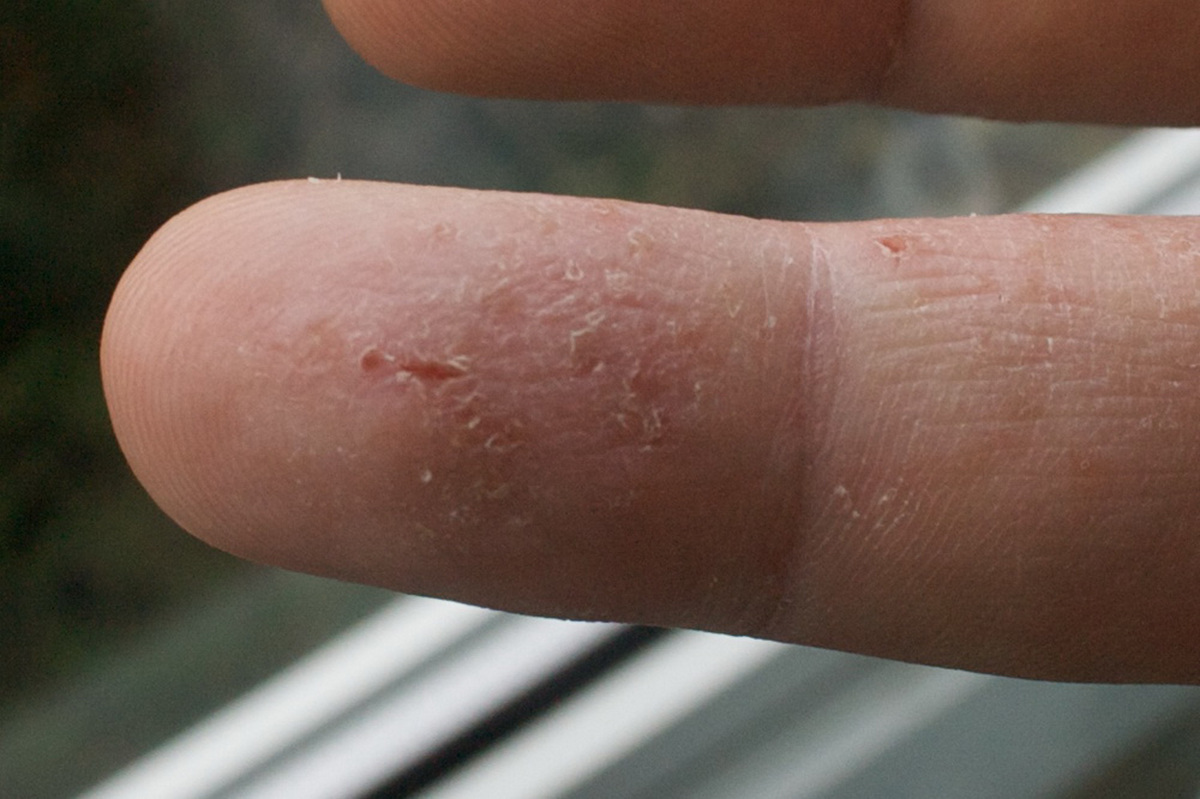Table of Contents
If you have eczema, you don't have a full-thickness wound of the skin (unless the itching has become so bad that you scratched through your skin). You just have 24/7 inflammation that makes your skin itch, itch, and itch some more. For itchy skin, emu oil plus vitamin E may be just what you need to stop the unpleasant sensation of itch.

Scientists don't have a good understanding of what would make one emu oil product better than another other than the addition of vitamin E. (This is vitamin E applied directly to the skin, not vitamin E taken as a nutritional supplement.)
They found that the anti-inflammatory substances in the oil were concentrated in the non-triglyceride fraction, that is, in the liquid of the oil rather than in the "grease," but that whatever it is that makes emu oil a good anti-inflammatory stands up during long-term storage. Emu oil is a good moisturizer, sealing water in the skin, making it more flexible and less prone to dry, flake, and peel as it heals.
How does emu oil stack up against the standard medications your doctor can give you for eczema? A clinical study of three eczema medications found that:
- Emu oil is more effective than Hydrocortisone or clotrimazole for relieving redness of the skin.
- Hydrocortisone is more effective than emu oil or clotrimazole for relieving itching.
- Clotrimazole is more effective than emu oil or Hydrocortisone for stopping scaling of the skin.
So why not use all three? Although emu oil's greatest strength is in making red skin more normally colored, it has some anti-itch effect and adds to other treatments in reducing scaling. Although emu oil from Australia is food grade, and safe to digest, it is more effective when it is applied directly to the skin rather than taken as a nutritional supplement. The oil is noncomedogenic, that is, it won't cause whiteheads or blackheads, and allergies to emu oil are exceedingly rare.
See Also: Natural Treatments for Eczema
Apply emu oil to freshly cleansed skin you have patted dry with a clean towel. If you are treating eczema on an infant, make sure you are using pure, food grade emu oil from Australia. Babies can and do reach all over and put products that are rubbed onto their skin into the mouths, so you don't want to put anything that isn't safe to eat on your babies skin unless it is safely under a bandage or a diaper.
If you're using other creams or treatments for your eczema, emu oil can be used in conjunction, but it's best to wait for a few minutes between different product applications.
Some people who use emu oil get results in a day or two, while others get results in a month or two. Don't expect a cure for eczema overnight. Continue using every other method at your disposal to keep the condition in check. And only buy products that come with a money back guarantee.
- Attarzadeh Y, Asilian A, Shahmoradi Z, Adibi N. Comparing the efficacy of Emu oil with clotrimazole and hydrocortisone in the treatment of seborrheic dermatitis: A clinical trial. J Res Med Sci. 2013 Jun. 18(6):477-81.
- Whitehouse MW, Turner AG, Davis CK, Roberts MS. Emu oil(s): a source of non-toxic transdermal anti-inflammatory agents in aboriginal medicine. Inflammopharmacology. 1998.6(1):1-8.
- Zemtsov A, Gaddis M, Montalvo-Lugo VM. Moisturizing and cosmetic properties of emu oil: a pilot double blind study. Australas J Dermatol. 1996 Aug, 37(3):159-61. No abstract available. Erratum in: Australas J Dermatol 1997 May. 38(2):104. Zemtsov A.
- Photo courtesy of Ron Knight by Flickr : www.flickr.com/photos/sussexbirder/8079571419
- Photo courtesy of Marek Isalski by Flickr : www.flickr.com/photos/mazdotnu/4149275665/


Your thoughts on this